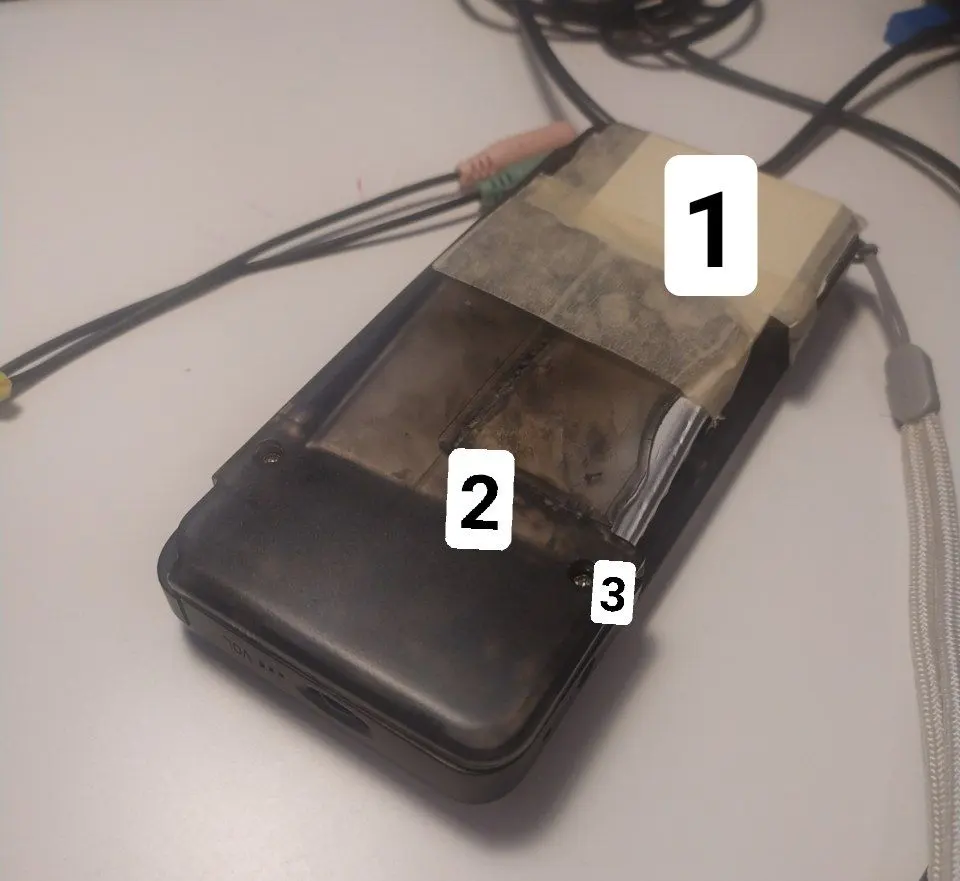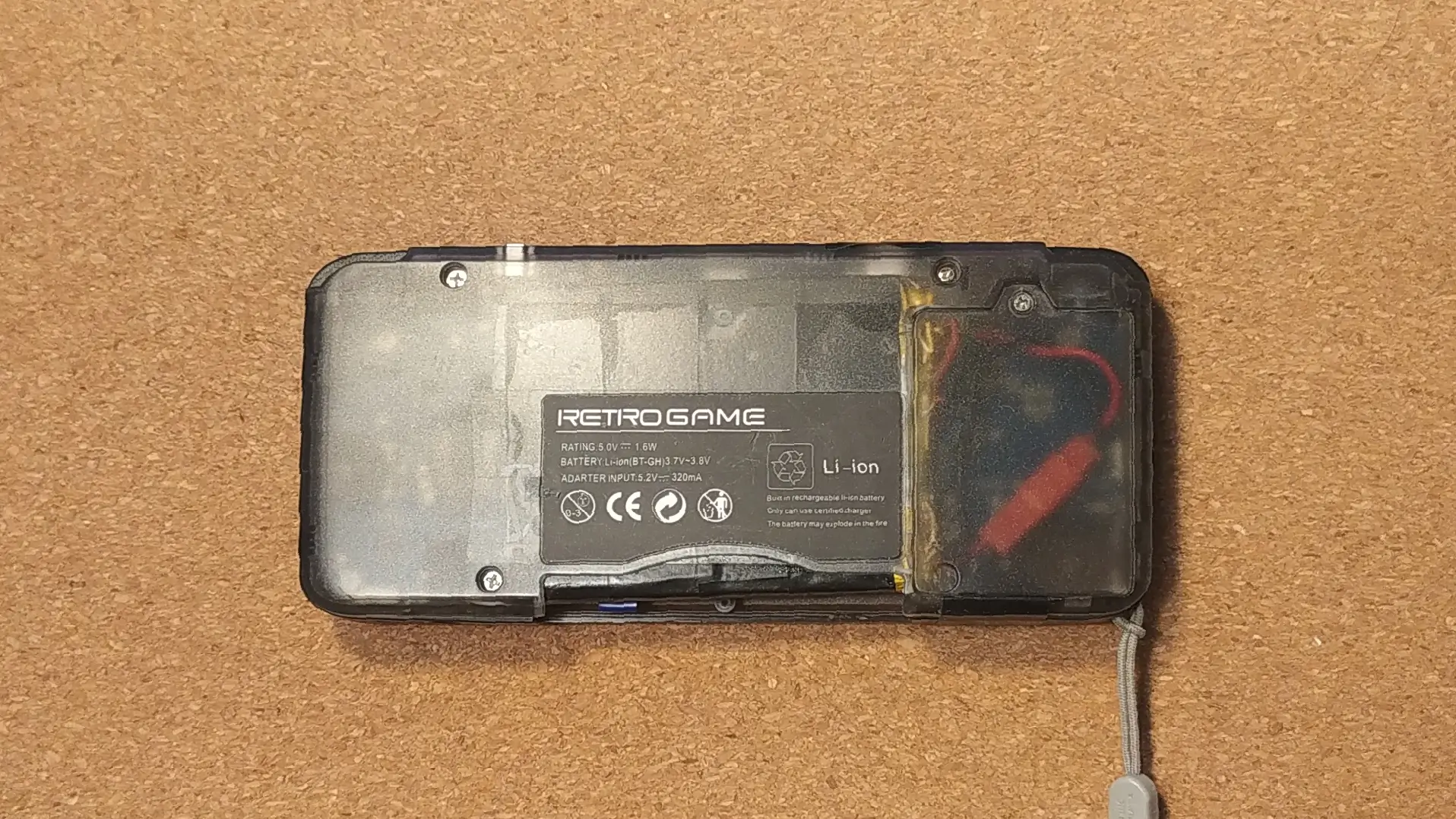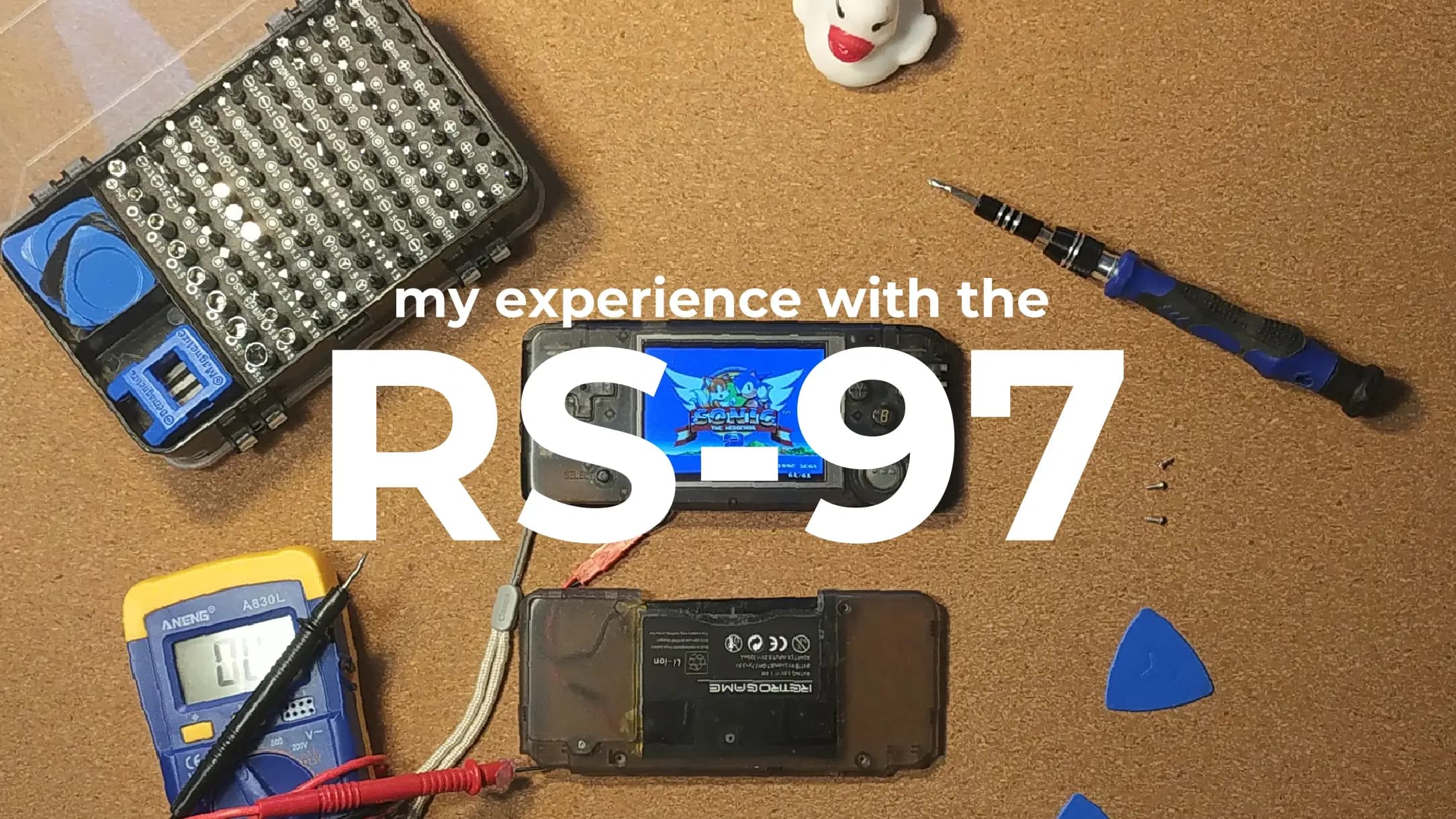If you’ve been on the internet for a while, you might recognize what is in this article’s cover photo as the SouljaGame Handheld: a cheap knock-off emulation handheld that got popular thanks to the rapper SouljaBoy reselling it and claiming it as his creation. Well, I have that console, and I love it. Let me tell you why.
To be fair, I don’t actually have a SouljaGame Handheld. What I do have is an Anbernic RS-97, which is the same exact hardware, except sold for way less and on more reputable storefronts like Amazon and AliExpress. I did first hear about it in this video by Rerez, where it was covered as a SouljaBoy product, and from the very first moment I saw it I was intrigued.
ℹ️ This article contains links to external sites, including online stores. None of the links are sponsored or represent an endorsement by the author. They are exclusively included for reference.
Interesting cheap stuff
Have you ever seen a cheap calculator or alarm clock at a random shop and wondered about its history? I’ve personally done so more often than I would like to admit. I lose myself thinking about how some actual people must have designed, engineered, and made it. And while this works for every kind of product, for me it works especially on tech stuff, because requires much more precision and knowledge than the rest. For any model of these calculators you can find for €3 at your average Chinese market, someone must have thought of printing and assembling PCBs, the case, handling the inputs and display, and of course, making sure the calculator actually calculates stuff properly.
And I know what you’re thinking - most of these kinds of products actually use one of a few chips which handles most of the stuff by itself, but I still admire how such different products can be born from the same basis, all while maintaining price competitivity. There’s a lot of skill required to do that.
When I first saw the RS-97 in Rerez’s videos, I felt like I was looking at a very cool and complicated calculator in my local Chinese market. I was extremely intrigued by how some random obscure brand was managing to pull off a working - and good-looking - games console out of seemingly thin air. So I dug deeper.
Deeper in the rabbit hole
What should have been a quick 30-minute YouTube video quickly turned into hours of research. Rerez absolutely destroyed the console in his review, but some people in the comments were reporting that there was an active modding community that was working to solve most of the issues. And besides, Rerez is known to be hypercritical in some instances, like in his review of PuLiRuLa, an obscure arcade game that I would later highly enjoy playing on my own RS-97.
So, after some research, I had some information gathered. - The RS-97 is easily moddable, basically unbrickable, and the surrounding community is very active (or rather, was at the time - more on that later). A Linux distribution is available for it: RetroFW, which is an adaptation of OpenDingux. It’s based on a very old kernel and it doesn’t make use of the device’s poorly documented GPU, which limits software compatibility to SDL1 programs. - The console is built with a Ingenic JZ4760B CPU, which is from around 2010. It’s a MIPSle device with a ridiculous amount of DDR3 RAM, SD-card storage, a 3-inch screen, and no wireless capabilities at all. - In case that wasn’t clear, the RS-97 is not nearly as powerful as your average cheap smartphone. I could have gotten a better emulation experience by just downloading RetroArch on my phone and getting one of those cheap controller thingies.
Looking for a safe zone
But despite all the clear cons, I still wanted it somehow. I had heard great things about how the modded firmware was able to make emulators up to PS1 run smoothly, but at that point, I wasn’t interested in that. I wasn’t born yet when the consoles the RS-97 emulates best were on the market, so what I cared the most about was the homebrew stuff, and of course, creating things myself.
And again, I know what you’re thinking. I have a computer and a smartphone: had I wanted to create something new, couldn’t I have done it for that? Had I wanted to play some homebrew or obscure games, couldn’t I have just opened itch.io? You’re right. But what I wanted was something slightly different.
What I wanted was a playground. Something on which I could test, try and experiment without worrying about something going rogue and messing up my data. I kind of saw this device as a “tech comfort zone”: not the latest, not the greatest, but a stable and nice device to escape the endless search for the best experience, leaving behind the overwhelming side of gaming for a much chiller alternative.
And so I got it
And so I got it. And ever since, I’ve treated it exactly like that. And I couldn’t have been happier with my purchase. It’s been 4 years, and I’ve been playing with the console all through. I don’t use it daily, but whenever I want to chill out with some Sonic 2, F-Zero, or some kind of obscure game it’s my go-to place.
Even before trying the original OS, I had already flashed the SD card with RetroFW. I then proceeded with some of the most common mods: installing a better battery and adding a USB-C port. These mods are the first ones I ever did that required a soldering iron!
I’ve made plenty of beginner mistakes when handling the RS-97. But I can happily report that it has survived each and every time. I’ve shorted up contacts on the board multiple times, even with little sparks going off, but luckily no damage at all. The worst pain I inflicted on the console was at the time of my first attempt at a battery mod. There were some hard plastic pieces on the back cover I needed to get rid of, and I didn’t have an X-acto-like knife at the time, nor was I particularly smart. So I used a lighter. The results were foreseeable, but not to my stupid 14-year-old brain.

The RS-97 before having its back replaced after the accident
I ended up buying a replacement shell from a very kind community member. My way of implementing the USB-C mod wasn’t smart either. I replaced the Mini-USB port entirely instead of putting the USB-C port in place of the useless GameBoy Linker port, which means that I have no data transfer over USB now. Sucks to be me.

The RS-97 now. The removable connector for the modded battery can be seen through the frosted plastic.
Regardless of my stupid mistakes, it’s been a great ride. I’ve learned many new skills and had a lot of fun with this little toy. I’ve also made two games for it, JilJil and a 2048 clone. They’re not great, but they were never meant to be. They’re fun, and that’s all I wanted to accomplish. It’s a small contribution to the RetroFW space, but I know some people had fun with my work and that makes me proud.
Looking for a new RS-97
The sad reality of the RS-97 is that it’s out of production. It can be still found on sale online, but it’s old stock. Most of the development on the RetroFW GitHub has been halted.
The handheld gaming market has been moving at an alarming speed toward more expensive units. Anbernic has been following the trend, becoming soon a “premium brand” that now sells a variety of devices for €100+, compared to the ~€40 of the RS-97. They have been getting more performing, but as I already alluded to, performance is not that big of a concern here. Several of the products by Anbernic also run Android, which is orders of magnitude more of a pain in the ass to work with when trying to develop with simple tools, and annihilates that sense of community I get from my RS-97 running a custom OS with specifically tailored apps for it. Add wireless capabilities in the mix, which quickly transforms these devices to network-wide risks in case of a vulnerability, and you’ve completely lost me as a customer.
Not all hope is lost though. I’ve been considering getting a moral successor to my RS-97, as I hope you are after reading my experience. And my searches so far have led me here.
 The PS5000. Image credit: “Game Word Store” from AliExpress
The PS5000. Image credit: “Game Word Store” from AliExpress
The PS5000 is relatively cheap, has a nice big screen, and more importantly it runs Batocera Linux. It’s also more performing than the RS-97, and the CPU’s architecture is ARM, which is vastly more modern and supported. I truly believe in its modding potential. Although it takes off that sweet edge of weirdness from the RS-97, the pros easily outweigh the cons.
Will I buy one? Perhaps in the future. I’m still happy with my RS-97 so far. Should you buy one? That vastly depends on you. I obviously can’t guarantee you will have an experience like mine with the RS-97. But if you like to thinker, and are tired of Raspberry Pis and similar devices, you might want to give this one a chance. If you’re just looking for a device to play your retro games on the go, take a look at the aforementioned controllers for your phone, the newer Anbernic models, or at the Steam Deck, according to your budget.
I wish you the best of luck on your obscure handheld journey. I hope I’ve managed to convey some of my interest in this field in this article. Feel free to get in touch with me or comment below if you have anything relevant to share about this topic. See you on the next one!
